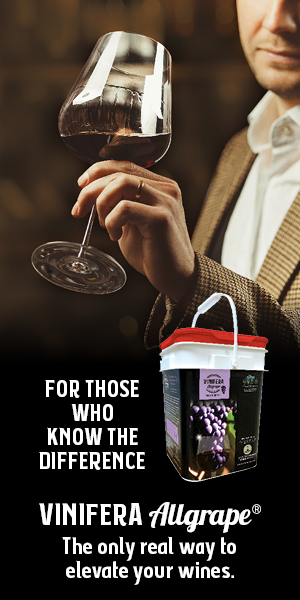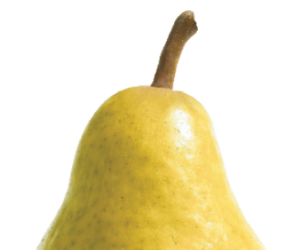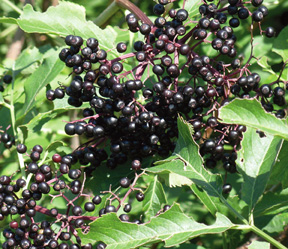Summer is here and while grapes may not be in season, delicious wine can be made with many fruits, vegetables, and other unique ingredients. Instead of waiting until the fall harvest, keep your winemaking going all summer long with something a little different.
The recipes in this article come from legendary home winemaker Jack B. Keller, Jr.’s new book Home Winemaking: The Simple Way to Make Delicious Wine. The book includes 65 wine recipes, broken into categories of grape, berry, fruit, tropical fruit, root, flower, herbal/spice, and novelty wines. WineMaker has selected a recipe from each section, minus grapes, from the book. Find the book at better booksellers for the full selection of recipes and chapters on making wine at home.
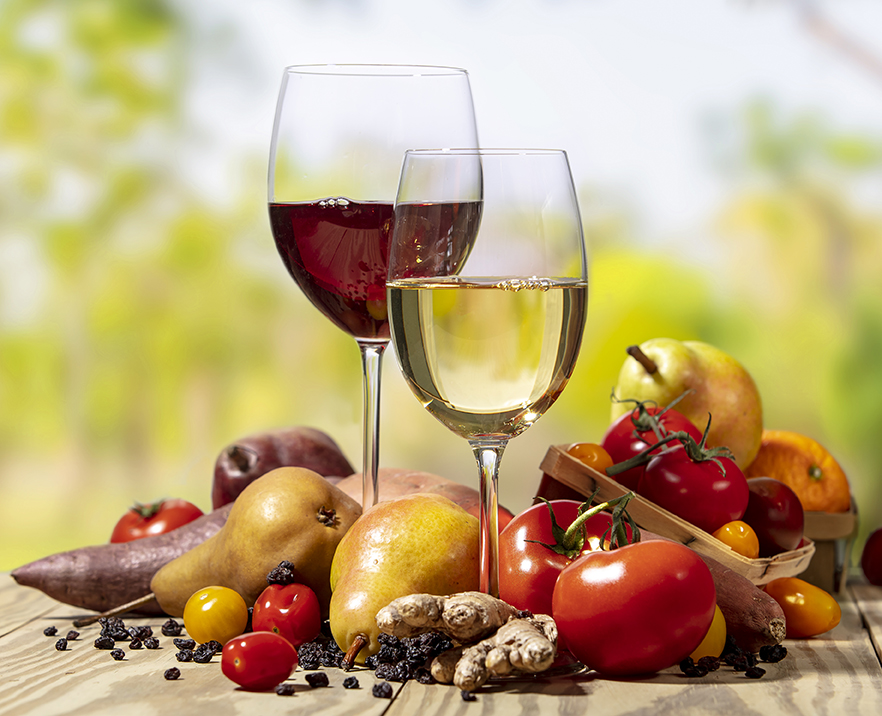
BLACKCURRANT WINE
Blackcurrant wine can be the toughest wine of all to make if the acidity level in your berries is on the extreme of what these berries are capable of producing. But don’t be intimidated. When augmented by higher-end sugars, they taste absolutely divine, even when highly acidic. Taste the berries, test them, and decide if you are up to the challenge.
At their best, blackcurrants are an absolute delight to eat, so they are terrific in pies, jams, jellies, syrup, culinary uses, and wine. They possess a unique, and complex, flavor profile, with layers of fruit and floral hints in their aroma when they are at their best behavior.
The berries can be found in the wild, but once the sugar levels rise in the maturing berries they are favorite targets of wildlife. It is far easier to obtain farm-grown berries, and this gives you some say in the flavor and balance of the berries you choose to ferment. Canned blackcurrant, either as berries, puree, concentrate, or juice, is a good choice for those not living in the relatively few states in which they are currently cultivated.
Blackcurrant wine is worth making because of the wealth of flavor it conceals. With aromatic floral notes, good structure and complexity worthy of any noble grape, blackcurrant is simply the Cabernet of berry wines.
The good thing about canned blackcurrant products, whether berries, puree, concentrate, or juice, is that its sometimes nightmarish acidity will almost certainly be manageable when canned. This goes a long way to simplifying the winemaking effort. Follow good winemaking procedures and this will be a wine to show off your skills. This recipe requires blackcurrant juice. I recommend Knudsen Just Black Currant juice; it comes in 32-oz. (956-mL) bottles; a case of 12 makes 3 gallons (11.5 L).
Jack’s Tip:
THE MUST will almost certainly require dilution, but how much depends on the berries themselves. Test, taste, and test again. If the acid appears manageable, a minimum amelioration may be required. I have made blackcurrant wine with as little as 20% and as much as about 60% water added, the latter only because I didn’t have enough canned berries. Just be cognizant of lurking tannins.
Since the berry’s minor acid is malic, Lalvin 71B yeast can eliminate most or all of it. The problem is it is difficult to test for malic acid in the home, so you don’t know how much the yeast will reduce titratable acidity (TA). However, sugar will go a long way toward balancing the wine, so higher acidity can be dealt with if the pH can be raised to at least 3.2 to give the yeast a less-hostile environment in which to work.
Recipe:
Wine Is Ready In: 11 months
You’ll Need: 1 gallon of juice per gallon of wine (3.8 L/3.8 L)
Additional Equipment: 3–5 gallon (11.5–19 L) primary
Makes: 1 gallon (3.8 L), but can be scaled up
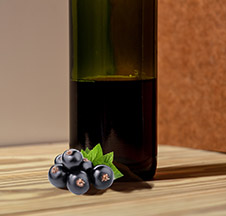
INGREDIENTS
1 gallon (3.8 L) blackcurrant juice
1 lb. 10 oz. (0.74 kg) very fine granulated sugar
Calcium carbonate, to raise pH to 3.2–3.3
Potassium metabisulfite, as needed
1⁄2 tsp. potassium sorbate
1 tsp. (3 g) yeast nutrient
1 g Fermaid-K
Lalvin 71B yeast (5 g)
DIRECTIONS
Prepare must: Add juice to primary and use pH meter to determine its pH. If very low (3.1 or below), add 1 gram of calcium carbonate, wait 2–3 hours, and add the second gram; wait an additional 2–3 hours and add a third gram. If higher than 3.1 (3.2 or above) taste to decide if you need to raise to pH 3.3. If 3.3. or higher, do not add calcium carbonate. Wait 4 hours and add sugar and yeast nutrient, stirring until completely dissolved. Wait 4 hours and add 0.2 g potassium metabisulfite and stir well. Cover the primary and set aside 12 hours.
Add yeast: To 1 cup warm water (not to exceed 102 °F/39 °C) add a pinch of yeast nutrient and stir to dissolve. Add yeast to water, stir, and cover mixture for 30 minutes. Add mixture to primary and cover primary.
Fermentation: Check specific gravity (SG) daily. When SG drops to 1.060, stir in Fermaid-K. When SG drops to 1.020, or lower, if the fermentation is still vigorous, transfer to secondary, and affix airlock. In 30 days, carefully rack.
Post-Fermentation: Move wine to a dark, cool place and allow to sit untouched 60 days while lees settle. Carefully rack. The wine must now sit an additional three months. Rack and add 0.2 g potassium metabisulfite and 1⁄2 teaspoon dissolved potassium sorbate and stir well. Check clarity and correct if necessary with pectic enzyme. Sweeten to taste or to balance. If sweetened, wait 30 days to ensure no renewed fermentation and carefully rack into bottles. Allow six months or more in bottles before tasting.
Options: To add body, add one or two very ripe bananas, cut crosswise into 1⁄2-inch (1.3-cm) slices, before pitching yeast. For ease of removal, place in a separate straining bag.
This wine responds to oak very well. One cup of oak cubes in the wine for 4–6 weeks during maturation is usually enough. Let taste be your guide, but don’t overdo it.
As with all berry wines, because tasting can consume all of your wine, it is wise to bottle four 187-mL splits to use for that purpose.
Similar berries: The following berries are more tart than the blackcurrant and require additional processing, but the basic recipe shown above is still relevant: Redcurrant, whitecurrant.
PEAR WINE
With around 20 species, 3,000 varieties and thousands of cultivars, it is obvious the pear has been cultivated for a very long time with plenty of natural variety to breed. It is almost a shame, then, to walk into a large supermarket and find 6 or 8 varieties, at most, to select from.
On the other hand, my wife and I stopped at several large, open-air produce markets in Spain, and there were probably 50–60 varieties to choose from — some small, some very large, some elongated, some round, and many in between. The vendors were anxious to cut a slice for you to try, and because of that, we bought just two each of four different and unusual tasting varieties we would never have experienced. I can only imagine what their wines would have tasted like.
Most who make pear wine have one or more pear trees or know someone who does. We used to have three until a blight killed them. I can say from experience that three adult trees produce an overwhelming crop. You can’t eat, preserve, make wine, or give them away fast enough to use them.
Balance in pear wine, as in most wines, is the counterplay between acidity, tannin, alcohol, and sugar. Get any one of these too high or too low, and the wine will express the fault. We are making a still (non sparkling) wine around 12% ABV. That is the magic number among wines. It is the number where alcohol’s biological stabilizing quality is assured. It is also the number at which the wine is expected to age at least 18 months before declining
in quality.
Jack’s Tip:
THIS RECIPE uses a lot of pears. If you have a pear tree, you will thank me. If you have to buy them, maybe not so much. You must take the extra time to remove the core and seeds from each pear. I guarantee you the seeds will impart an off-taste that will spoil the wine. Yes, this is time-consuming. It is important that once you start de-seeding the pears you immediately move to the next steps. If you don’t, they will begin to oxidize and turn brown. A light browning is acceptable, but not a dark one. You don’t want your wine to oxidize before you even make it. You can prevent this by putting your cut pears in a non-aluminum stockpot half-filled with water and the juice of 3 lemons.
Pears have decent sugar but poor acidity. Get the pH down to at least 3.5, 3.3 if you can without sending the TA too high. However, let your taste buds help determine if the TA is too high.
Recipe:
Wine Is Ready In: 13 months
You’ll Need: 5 pounds pears per gallon of wine (2.3 kg/3.8 L)
Additional Equipment: 1–2 nylon straining bags
Makes: 1 gallon (3.8 L), but can be scaled up

INGREDIENTS
5 lbs. (2.3 kg) pears
1 lb. 6 oz. (0.6 kg) very fine granulated sugar
Water to make 1 gallon (3.8 L)
1 1⁄4 tsp. powdered pectic enzyme
1⁄8 tsp. grape tannins
Acid correction, tartaric, as needed
Potassium metabisulfite, as needed
1⁄2 tsp. potassium sorbate
1 tsp. (3 g) yeast nutrient
Lalvin EC-1116 yeast
DIRECTIONS
Prepare must: Wash, de-seed, and chop pears rather finely, discarding their seeds. Place chopped pears in nylon straining bags and tie closed. In the primary, mash fruit completely to release as much juice as possible. Put 1 liter (1 qt.) of water on to boil and add sugar, stirring well to dissolve. Pour sugar water over bags and stir well. When lukewarm, dissolve yeast nutrient in 1 cup of juice and stir into the primary. Add water to make 1 gallon (3.8 L) and test juice for pH. Adjust acidity as necessary. Add 0.2 g potassium metabisulfite, stir well, cover primary, and set aside for 12 hours. Add pectic enzyme, stirring until completely dissolved. Re-cover primary and set aside 12 hours.
Add yeast: To 1 cup warm water (not to exceed 102 °F/39 °C) add a pinch of sugar and yeast nutrient and stir to dissolve. Add yeast to water, stir, and cover mixture for 30 minutes. Add to primary and stir well.
Fermentation: Gently squeeze bags at least twice daily for five days. Remove bags to a large bowl and squeeze firmly to expel remaining juice. Hang the bags over the bowl and squeeze firmly after 30 minutes. Add juice to primary and discard pulp. When SG drops to 1.020, or lower if the fermentation is still vigorous, transfer to secondary and affix airlock. Ferment to dryness.
Post-Fermentation: Move wine to a dark, cool place for 60 days, stirring every 15 days. Rack off of sediment and set aside another 60 days without stirring. If the wine is not clear, rack and set aside until wine clears. Carefully rack, check clarity, and correct with pectic enzyme and, if required, two-part fining. If fined, wait four days and rack. Add 0.2 g potassium metabisulfite, 1⁄2 teaspoon dissolved potassium sorbate, and 1⁄8 teaspoon grape tannin. Stir well and sweeten to taste or to balance. If sweetened, wait 30 days to ensure no renewed fermentation and carefully rack into bottles. Taste after six months, but it will improve considerably at
one year.
Options: To add body, add one or two very ripe bananas, cut crosswise into 1⁄2-inch (1.3-cm) slices, before pitching yeast. For ease of removal, place in a separate straining bag.
This wine blends well with many different wines. Experiment, but do not overpower the pear.
When sweetening this wine at the end, honey or raw sugar adds both sweetness and complexity. Honey adds a little length to the finish.
ORANGE WINE
Orange wines are great for sipping, for blending into Sangria, cocktails, or other beverages, and for culinary uses too numerous to mention. Whether you like your wine dry, off-dry, semi-sweet, or sweet, you can make an orange wine to suit. With care, it can be made into a dessert wine and co-produced with chocolate for a real treat.
Today, we are blessed to have oranges in the market year-round. Therefore, orange wine can be made anytime one decides to make it.
Jack’s Tip:
ORANGES possess a high TA composed almost entirely of citric acid, and their pH can sometimes be somewhat high as well. Bringing the pH down to an acceptable level for wine will raise the TA even higher. The TA can be brought down considerably with amelioration, but the wine will still initially be acidic. This can be smoothed out a bit by aging, especially since it is citric acid.
This is a fairly simple wine to make. It is best when made from a mix of Valencia and tart oranges (blood oranges will do), but these are not always available. If made from navel oranges, it will be necessary to zest half the oranges thinly. Otherwise, the zest of two of the oranges will do.
Recipe:
Wine Is Ready In: 16 months
You’ll Need: 8 medium-size oranges, 1 can frozen 100 percent white grape juice concentrate per gallon (3.8 L) of wine
Additional Equipment: 1 nylon straining bag
Makes: 1 gallon (3.8 L), but can be scaled up

INGREDIENTS
8 medium-size oranges
Zest of 2 oranges
1 can 100 percent white grape juice frozen concentrate, thawed
1 lb. 10 oz. (0.74 kg) finely granulated sugar
Water to make 1 gallon (3.8 L)
1 tsp. pectic enzyme
1⁄2 tsp. grape tannin powder
Tartaric acid, as needed
Potassium metabisulfite, as needed
1⁄2 tsp. potassium sorbate
1 tsp. (3 g) yeast nutrient
Lalvin BA11 yeast (5 g)
DIRECTIONS
Prepare must: Scrub oranges clean. Boil 1⁄2 gallon (1.9 L) water while thinly grating peelings of 2 oranges. Put gratings in a nylon straining bag. Peel oranges and remove all pith. Section all fruit and place in bag with zest, tie closed. Put bag in primary and squeeze the segments. Add tannin, yeast nutrient, and thawed grape juice concentrate to primary. Remove boiling water from heat and stir in sugar until completely dissolved. Pour over oranges, add additional water to increase the liquid to 1 gallon (3.8 L), cover the primary and set aside to cool. When cool, test juice for pH. Begin acid correction if necessary. Add 0.2 g potassium metabisulfite, stir well, cover primary, and set aside for 12 hours. Add pectic enzyme, stirring until completely dissolved and set aside 12 hours.
Add yeast: To 1 cup warm water (not to exceed 102 °F/39 °C) add a pinch of yeast nutrient, 1 teaspoon of sugar, and stir to dissolve. Add yeast to water, stir, and cover mixture for 30 minutes. Add mixture to primary, stir, and cover primary.
Fermentation: Squeeze nylon straining bag 4–6 times a day. When SG drops to 1.060, remove nylon straining bag and drip drain (squeeze gently every 15 minutes) over large bowl for 1 hour. Discard orange pulp and pour juice into the primary. When SG drops to 1.020, or lower if the fermentation is still vigorous, transfer to secondary and affix airlock. In 30 days, carefully rack.
Post-Fermentation: Move wine to a dark, cool place for 30 days and carefully rack. Repeat every 30 days until wine clears. Correct clarity with pectic enzyme and, if necessary, two-part fining. If fined, wait four days and rack. Add 0.2 g potassium metabisulfite and 1⁄2 teaspoon dissolved potassium sorbate. Stir well. Sweeten to taste or to balance. If sweetened, wait 30 days to ensure no renewed fermentation and carefully rack into bottles. Allow to age one year in bottles for acid to smooth out before tasting.
Options: This wine can be sweetened with honey for greater complexity. Most honey contains pollen, so check the bottom of secondary after 30 days for signs of a very light dusting of pollen. If present, very carefully rack and immediately rack again into bottles.
This wine blends very well with many wines. Running bench tasting trials is essential to getting it right.
Similar fruit: The following fruit can be substituted for oranges in this recipe: Tangerine, clementine, satsuma, cara cara navel, bitter orange, and citron.
SWEET POTATO WINE
Sweet potatoes are native to the Americas, believed to have become a separate species somewhere between the Yucatan in Mexico and northeast Venezuela. Its actual parents are not yet known. It was domesticated at least 5,000 years ago and spread into the Caribbean and South America by 2,500 BC. It was brought to Spain by Columbus and spread throughout the world by post-Columbian exploration and trade.
Little is known about its use in winemaking before the eighteenth century. But it’s difficult to believe its natural sweetness was not put to use much earlier than that. In any event, it has been a staple in the South since at least the Civil War.
The recipe that follows probably dates back no earlier than the 1920s-30s, but this is just an educated guess based on its ingredients. I have updated the recipe over the years.
Jack’s Tip:
AS IS USUAL for root vegetables, the pH of the sweet potato is high—pH 5.3 to 5.6. I never recorded its TA, but know it was not very high. The recipe that follows takes care of the acid, but you should check it at least once, preferably before fermentation begins, to make sure things are on track.
Recipe:
Wine Is Ready In: 12 months
You’ll Need: 6 pounds sweet potatoes per gallon of wine (2.7 kg/3.8 L)
Additional Equipment: 1–2 nylon straining bags
Makes: 1 gallon (3.8 L), but can be scaled up

INGREDIENTS
6 lbs. (2.7 kg) sweet potatoes
1 lb. (0.45 kg) white or golden raisins
2 lbs. (0.9 kg) light brown sugar
Water to make 1 gallon (3.8 L)
1 1⁄2 tsp. tartaric acid
1 tsp. pectic enzyme
1⁄8 tsp. grape tannin powder
Potassium metabisulfite, as needed
1⁄2 tsp. potassium sorbate
1 tsp. (3 g) yeast nutrient
Lalvin EC1118 yeast (5 g)
DIRECTIONS
Prepare must: Scrub sweet potatoes and dice finely, skin on. Put diced potatoes in a pot and just cover with water. Bring to boil, cover the pot, reduce to simmer for 25 minutes. Meanwhile, mince or chop raisins and put in primary with half the sugar. Strain the potatoes over the primary, setting potatoes aside for later culinary use. Stir to dissolve sugar and add tartaric acid and yeast nutrient. Add enough water to make up 1 gallon (3.8 L) and wait 1 hour. Add 0.2 g potassium metabisulfite, stir well, cover primary, and set aside for 12 hours. Add pectic enzyme, stirring until completely dissolved and set aside 12 hours.
Add yeast: To 1 cup warm water (not to exceed 102 °F/39 °C) add a pinch of yeast nutrient, 1 teaspoon of sugar, and stir to dissolve. Add yeast to water, stir, and cover mixture for 30 minutes. Add mixture to primary, stir, and cover primary.
Fermentation: Ferment 7 days, stirring twice daily. Strain through nylon and discard strained raisins. Add remainder of sugar, stir well to dissolve, transfer to a secondary, and affix airlock. Wait 30 days and carefully rack.
Post-Fermentation: Move wine to a dark, cool place for 30 days and rack. Rack every 30 days until wine clears (may take 4–5 months). Wait another 30 days after clearing and check for continued sedimentation and improved clarity. Aid clarity as necessary with amylase, pectic enzyme, or two-part fining. If fined, wait four days and rack. Add 0.2 g potassium metabisulfite and 1⁄2 teaspoon dissolved potassium sorbate. Stir. Sweeten to taste or to balance. If sweetened, wait 30 days to ensure no renewed fermentation and carefully rack into bottles. This wine can be consumed in six months, but the usual aging in bottles is nine months.
Options: When sweetening at the end, try using Barbados, Muscovado, or dark brown sugar for more complexity.
This wine may blend well, but this author simply has never tried it.
Because tasting can consume all of your wine, it is wise to bottle four 187-mL splits to use for that purpose.
Similar vegetable: The African yam looks similar, but shouldn’t be used in this recipe. There are no substitutes for the sweet potato using this recipe.
HONEYSUCKLE WINE
For years I tried, without success, to make a good honeysuckle wine, mainly following the recipes of those who went before me. Well, “without success” is perhaps a bit dramatic. I made wine. Most people liked it. But I didn’t. Then one day I was judging a county fair wine competition and tasted the perfect honeysuckle wine. I met up with the winemaker after the competition and we talked about his wine. I finally had to ask him outright how many flowers he used. He told me and I knew what I had been doing wrong.
Honeysuckle wine has been around at least two thousand years, so it amazes me that all the recipe references I’ve read make a weak wine. True, for the most part, honeysuckle wine was a “homestead wine,” generally made by the woman of the house, and it was a quality wine, no doubt, but they did not often write books on winemaking. So those recipes seemingly have been lost, but perhaps there are many recipes that simply haven’t been discovered. I can only wonder why so many authors have gotten it so wrong throughout the nineteenth and twentieth centuries.
The earliest mention I can find of honeysuckle wine is in ancient Korea. It’s a mention, not a recipe. Honeysuckles are found over much of the world, so I assume if they were making it in Korea, they were making it in many other places. It just wasn’t mentioned in a way I can retrieve.
What follows is the recipe I managed to elicit from the competition entrant, plus sulfite additions and other essentials. I made the yeast selection myself.
Jack’s Tip:
WITH 180 SPECIES of honeysuckle recorded and many imported ones having become naturalized and now invasive, no single species can be cited as “the best” for making wine. My only advice is that if it is fragrant, it can be used with expectations of success. There is a good chance that the common honeysuckle, with white and yellow flowers, is the imported, now naturalized and invasive, Lonicera japonica, or a variety thereof, or cultivar. Introduced into the United States in 1806, it became widely naturalized by the 1860s. The native, common honeysuckle, Lonicera periclymenum, also known as woodbine, is substantially widespread. Either is a candidate for wine, as is the coral or trumpet honeysuckle (Lonicera sempervirens).
Note: Before making honeysuckle wine, confirm the identity of the honeysuckle species you’re harvesting and that it’s edible. Don’t make wine out of honeysuckle berries, as they are often toxic.
Recipe:
Wine Is Ready In: 14 months
You’ll Need: 2 quarts of honeysuckle flowers per gallon of wine (1.9 L flower per 3.8 L wine)
Additional Equipment: 1 colander
Makes: 1 gallon (3.8 L), but can be scaled up
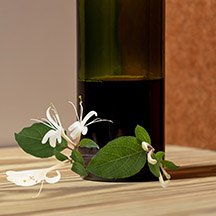
INGREDIENTS
2 qts. (1.9 L) (packed) honeysuckle flowers
2 lbs. (0.9 kg) very fine granulated sugar
2 tsp. tartaric acid
1 tsp. citric acid
1⁄4 tsp. grape tannin powder
Water to make 1 gallon (3.8 L)
Potassium metabisulfite, as needed
1⁄2 tsp. potassium sorbate
1⁄4 tsp. yeast energizer
1 tsp. yeast nutrient
Lalvin DV10 yeast
DIRECTIONS
Prepare must: Wash flowers under cold water. Put in a large pot with a tight-fitting lid and 21⁄2 quarts (2.3 L) water. Bring to simmer and place the lid on the pot. Turn off heat and let steep three hours. Meanwhile, bring 1 quart (1 L) water to boil, remove from heat and dissolve sugar, grape tannin, yeast nutrient, yeast energizer, and acid thoroughly in water. Pour into your primary. Using a colander, strain flower water into primary, pressing flowers well to extract as much essence as possible. Discard flowers. Add 0.2 g potassium metabisulfite, stir well, cover primary, and wait 12 hours.
Add yeast: To 1 cup warm water (not to exceed 102 °F/39 °C) add a pinch of yeast nutrient, 1 teaspoon of sugar, and stir to dissolve. Add yeast to water, stir, and cover mixture for 30 minutes. Add mixture to primary, stir, and cover primary.
Fermentation: Stir 2–3 times daily until SG drops to 1.020, or lower if the fermentation is still vigorous. Transfer the wine to secondary and attach airlock. Set aside in a dark place for 30 days and carefully rack.
Post-Fermentation: Move wine back into the dark for 90 days and carefully rack. Rack again after another 90 days. Correct clarity if necessary and wait three days. Add 0.2 g potassium metabisulfite, 1⁄2 teaspoon dissolved potassium sorbate, check pH, and correct as needed. Sweeten to SG 1.002 or to balance. If sweetened, wait 30 days to ensure no renewed fermentation and carefully rack into bottles. Taste in 6 months.
Options: To add body, add one or two very ripe bananas, cut crosswise into 1⁄2-inch (1.3-cm) slices, before pitching yeast. For ease of removal, place it in a separate straining bag.
When sweetening at the end, use quality honey instead of sugar. At the end of the final 30-day wait period (after stabilization), carefully check to see if pollen has precipitated out of the honey. If present, rack again, wait three days and then bottle.
As with all flower wines, because tasting can consume all of your wine, it is wise to bottle four 187-mL splits to use for that purpose.
Similar flowers: None.
GINGER WINE
The root of the ginger plant has long been an important food supplement. Dried and ground, it is a spice. Pickled, it is a relish. Candied, it is a delicacy. Shredded or thinly sliced fresh, it is a condiment. In the condiment form, it is sometimes added to wine recipes which would otherwise yield uninspiring results. But it can also be used to make a wine of its own.
I have always been amazed at how often this wine has placed well in competitions, including my own. The secret, I believe, is because it is just a good wine. Whether made for cooking, blending or drinking, the result is the same.
Ginger wine can be enjoyed in its own right or used as a blend to give life and interest to wines that would otherwise lack them, especially herbal, grain, and vegetable wines. As a separate wine, it should be stabilized and sweetened to a specific gravity of no more than 1.008 (2% residual sugar). It goes well unchilled on a cold day, being both pleasant and warming. On warmer days, it should be served chilled as it offers an inner warmth without warming the outside.
Jack’s Tip:
MAKING A THIN WINE by itself, it requires a body-builder to be fully enjoyed. Here we use 100% grape juice concentrate to supply that body without subtracting from its own character. The amount of ginger used is more than sufficient to provide that character. If that proves too much, you can reduce it by half and it will still shine through. Neither amylase nor pectic enzyme are part of the recipe but may be required if the wine does not clear on its own.
Recipe:
Wine Is Ready In: 7 months
You’ll Need: 1⁄2 pound (0.23 kg) ginger root, 2 cans frozen 100 percent white grape juice concentrate per gallon (3.8 L) of wine
Additional Equipment: 1 jelly bag
Makes: 1 gallon (3.8 L), but can be scaled up

INGREDIENTS
1⁄2 lb. (0.23 kg) ginger root, grated
2 cans 100 percent white grape juice frozen concentrate, thawed
1⁄4 tsp. pectic enzyme
1 lb. (0.45 kg) very fine granulated sugar
Water to make 1 gallon (3.8 L)
2 1⁄2 tsp. tartaric-citric acid blend (60:40 ratio, or 11⁄2 tsp.: 1 tsp.)
1⁄4 tsp. grape tannin powder
Potassium metabisulfite, as needed
1⁄2 tsp. potassium sorbate
1 1⁄4 tsp. (4 g) yeast nutrient
Lalvin EC-1118 yeast
DIRECTIONS
Prepare must: Wash the ginger root, grate it (it makes no difference if you peel the root or not, but I suggest you do not), and put in a jelly bag with 4–5 sanitized glass marbles for weight, tie closed, and put in primary. Put all other ingredients, including 0.2 g potassium metabisulfite, except yeast in primary and stir well to dissolve thoroughly. Cover primary and set aside for 12 hours.
Add yeast: To 1 cup warm water (not to exceed 102 °F/39 °C) add a pinch of yeast nutrient, 1 teaspoon of sugar, and stir to dissolve. Add yeast to water, stir, and cover mixture for 30 minutes. Add mixture to primary, stir, and cover primary.
Fermentation: Gently squeeze bag twice daily until SG drops to 1.020, or lower if the fermentation is still vigorous. Remove the bag and squeeze firmly. Add drippings to primary and discard ginger root. Transfer to secondary, stir well and affix airlock.
Post-Fermentation: Move wine to a dark place for 30 days and carefully rack. Repeat until absolute dryness and wine clears (2–3 months). If clarity is not pristine, add a small amount of amylase and wait 6 hours. If haze persists, add 1⁄4 teaspoon pectic enzyme. A second addition may be required. Wait 12 hours and add 0.2 g potassium metabisulfite and 1⁄2 teaspoon dissolved potassium sorbate. Add two-part fining only if needed, wait four days, and carefully rack. Sweeten to taste or to balance. If sweetened, wait 30 days to ensure no renewed fermentation and carefully rack into bottles. Allow to age three months before tasting but will improve in 6 months.
Options: To add body, add one or two very ripe bananas, cut crosswise into 1⁄2-inch (1.3-cm) slices, before pitching yeast. For ease of removal, place it in a separate straining bag.
When sweetening at the end, try using premium honey. At the end of the final 30-day wait period (after stabilization), carefully check to see if pollen has precipitated out of the honey. Do not disturb any fine lees when bottling. If in doubt, rack again, wait three days and then bottle. If you prefer to avoid using honey when sweetening at the end, use Demerara sugar or Sugar In The Raw instead.
Similar spice: None.
TOMATO WINE
Tomatoes were domesticated by the Aztec and Inca civilizations, and imported to Europe, where they were used in cooking long before they were used in the thirteen colonies. In the colonies, they were introduced via the Spanish colony of Florida into Georgia and then South Carolina, where it was especially appreciated. It is believed that tomato wine followed that same route. In the other colonies, however, there was a strong initial aversion to eating tomatoes thanks to the spread of many misconceptions about the plant.
When the idea of tomato wine is first expressed to a group, the reaction is always very mixed. For some, the initial reaction is “Yuck!” But the usual reaction is surprise, as in “Who’d have thunk it?!” There is also a lingering curiosity as to its taste. Let me assure you, it is nothing like you might expect.
When entered in competitions, well-made tomato wines tend to do fairly well. Having judged many of these wines, I have never hesitated to revel in the skill with which they are made. I have talked to many of these winemakers and have concluded that no one variety of tomato is favored, but rather the best wines tend to have 2–3 varieties in their pedigree, including cherry and heirloom.
Jack’s Tip:
ON ITS OWN, tomato wine is thin and has little to recommend it other than its unique taste. Grape juice concentrate helps the wine tremendously with body and tends to normalize
its taste.
Recipe:
Wine Is Ready In: 12 months
You’ll Need: 4 pounds (1.8 kg) tomatoes, 1 can frozen 100 percent white grape juice concentrate
Additional Equipment: 1 nylon straining bag
Makes: 1 gallon (3.8 L), but can be scaled up

INGREDIENTS
4 lbs. (1.8 kg) ripe tomatoes, mixed varieties favored
1 can 100 percent white grape juice frozen concentrate, thawed
1 lb. 10 oz. (0.74 kg) Demerara sugar or Sugar In The Raw
1⁄4 tsp. grape tannin powder
1 tsp. powdered pectic enzyme
Water to make 1 gallon (3.8 L)
Potassium metabisulfite, as needed
1⁄2 tsp. potassium sorbate
1 1⁄2 tsp. (5 g) yeast nutrient
Red Star Côte des Blancs yeast
DIRECTIONS
Prepare must: Put 2 quarts (1.9 L) of water on to boil. When boiling, remove from heat and dissolve sugar thoroughly. Meanwhile, wash tomatoes and cut into chunks, discarding any bruised or insect-scarred parts. Put tomatoes and any juice from cutting into a nylon straining bag in the primary. Tie closed and mash the tomatoes. Pour grape concentrate over tomatoes and hot sugar-water over that. Add water to make 1 gallon (3.8 L) total, add tannin and yeast nutrient. Add 0.2 g potassium metabisulfite and stir well. Cover the primary and wait 12 hours. Add pectic enzyme, stirring until completely dissolved. Cover primary and set aside 12 hours.
Add yeast: To 1 cup warm water (not to exceed 102 °F/39 °C) add a pinch of yeast nutrient, 1 teaspoon of sugar, and stir to dissolve. Add yeast to water, stir, and cover mixture for 30 minutes. Add mixture to primary, stir, and cover primary.
Fermentation: Submerge bag several times a day (do not squeeze) for 7 days. Remove the bag and suspend over the primary 1 hour (do not squeeze). Discard tomatoes and transfer liquid to secondary, leaving sediments behind. Do not top-up but affix airlock.
Post-Fermentation: Set aside in a dark place for 60 days. Carefully rack and affix airlock. Return to dark, and repeat every 60 days until wine clears. Carefully rack, add an additional 1⁄2 teaspoon pectic enzyme, stir well, top-up, affix airlock, and return to dark for 60 days. Add 0.2 g potassium metabisulfite, 1⁄2 teaspoon dissolved potassium sorbate, and stir well. Check pH and correct it if necessary. Sweeten to taste or to balance, wait 30 days to ensure no renewed fermentation and carefully rack into bottles. Do not consume for a year. Serve chilled.
Options: Add 1 jalapeño, halved lengthwise and de-seeded, then cut into thin strips, to nylon straining bag.
Tomato wine blends well with a spice or herbal wine, such as rosemary, tarragon, ginger, or a chili wine such
as jalapeño.
Serve with a dash or two of hot sauce, stirred.
As with all novelty wines, because tasting can consume all of your wine, it is wise to bottle four 187-mL splits to use for that purpose.
Similar fruit: None.
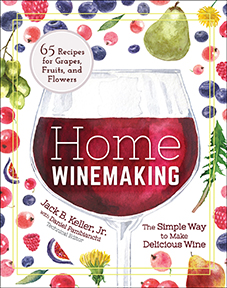
Text excerpted from Home Winemaking: The Simple Way to Make Delicious Wine © 2021 by Jack B. Keller, Jr. Used with permission from Adventure Publications. Text edited for length and metric equivalents added by WineMaker.
Jack wrote many articles for WineMaker over the past two decades on making wine from all sorts of fruits. He passed away in September 2020.

